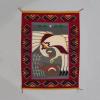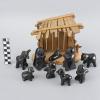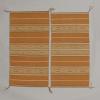Posted on: Monday, January 11, 2021
This pictorial rug by Atsuma Blackhorse has a gray background with the central motif of a stylized Mimbres rabbit and a stylized Hopi (Sikyatki-style) bird, likely an eagle. There is a maroon border with grey and black geometric double hooks and... read more
Posted on: Monday, January 4, 2021
This tall jar is utility ware vessel. As the name implies, this jar was used for everyday activities such as holding water, cooking, or other domestic uses at Kuaua Pueblo located north of Albuquerque at the Coronado Historic Site.
Utility... read more
Posted on: Monday, December 14, 2020
This blackware ceramic “Nacimiento” or nativity scene was made by Santa Clara potters Dorothy and Paul Gutierrez around 1975. It includes angels, animals, Mary, Joseph, and baby Jesus. A small wooden manger, made in... read more
Posted on: Monday, December 7, 2020
These two rugs were woven by Ellen Smith (left), a master weaver, and her granddaughter Angie Smith (right), who was age 14 at the time. They were both entered in the 1961 Gallup Intertribal Ceremonial, where Ellen won a special award and Angie... read more
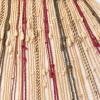
Khipu detail. MMA 2000.6.1
Posted on: Monday, November 30, 2020
From the early 1400s until the 1530s AD, the Inka ruled one of the world’s most extensive empires, Tawantinsuyu, the “Land of the Four Corners.” At its maximal extent, Inka territories extended some 2500 miles north-south along... read more
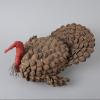
Coushatta turkey basket (MMA 76.33.2)
Posted on: Monday, November 23, 2020
This turkey-shaped container is made of coiled pine needles, raffia, and pine cone. Made by an unknown artist of the Coushatta people of the Southeastern United States, the pine needles are bundled together and coiled to form the overall shape.... read more
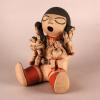
Object Monday: Kʾúutìimʾé (Cochiti) Storyteller
Posted on: Monday, November 16, 2020
This storyteller figurine by Dorothy Trujillo (1932-1999) shows a seated male figure wearing a squash blossom necklace and holding five children in his arms. One of the children is holding a ball. The adult figure has closed eyes and an open... read more
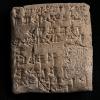
Cuneiform tablet from the reign of Rim-Sin I of Larsa. 67.134.2
Posted on: Monday, November 9, 2020
One of the hallmarks of the state – ancient or modern – is bureaucracy. State administrators keep records of land, economic production, people, expenditures, and taxes. In ancient Mesopotamia, writing systems are believed to... read more
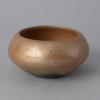
Picuris Pueblo Micaceous Bowl
Posted on: Monday, November 2, 2020
This small ceramic bowl was created by Picuris Pueblo potter Anthony Durand in 1976. The bowl has a golden shine to it due to the mica found in clay deposits in Northern New Mexico... read more
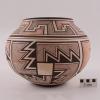
A polychrome olla by mother and son potters Josephine and Randy Nahohai of Zuni Pueblo, ca. 1986.
Posted on: Monday, October 12, 2020
By: Lauren Fuka
Catalog #: 87.48.20Culture: A:shiwi (Zuni Pueblo, Zuñi)Artist: Josephine Nahohai and Randy NahohaiOrigin: Zuni Pueblo, New MexicoDate: ca. 1986Collection: Ethnology
This polychrome jar was made by Zuni potter... read more



